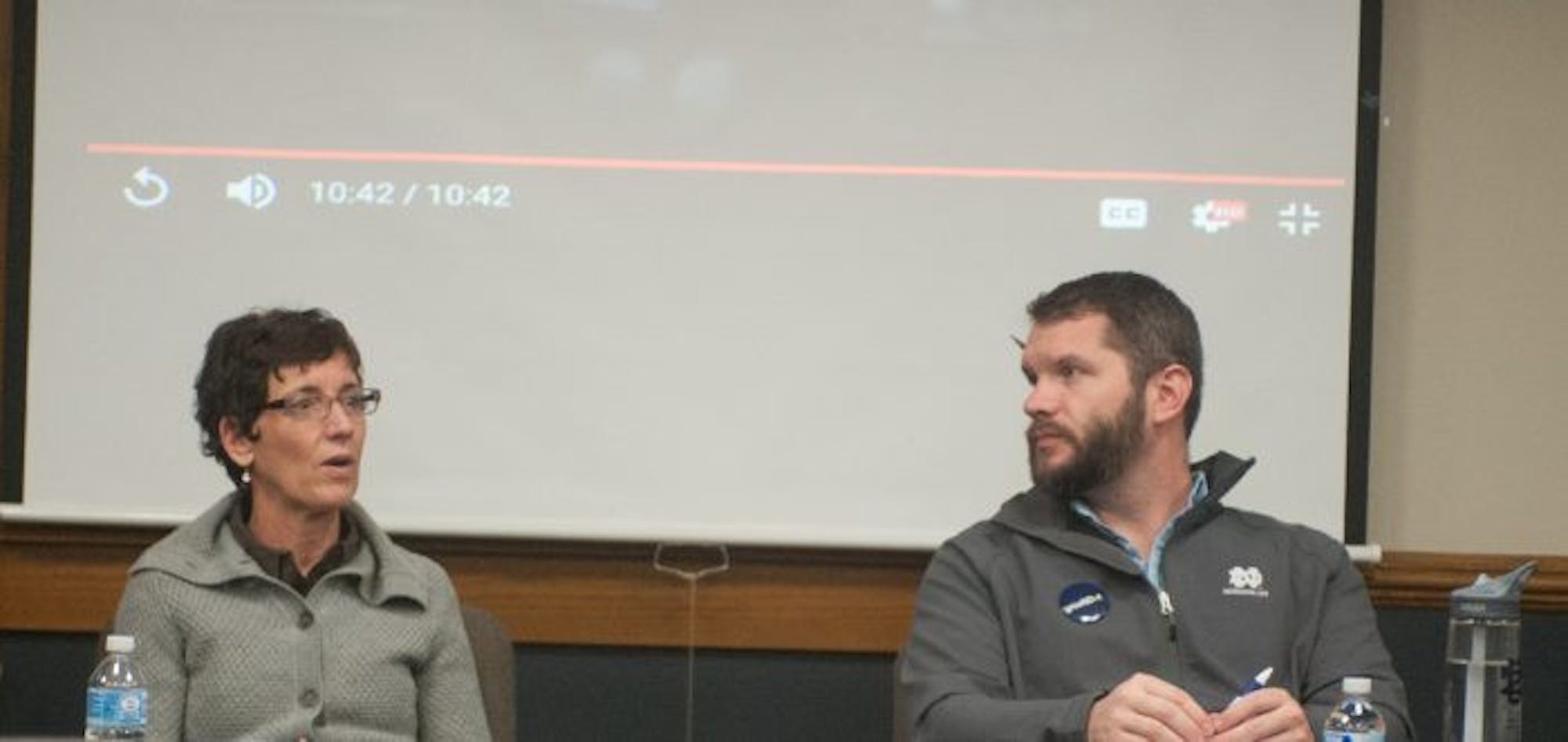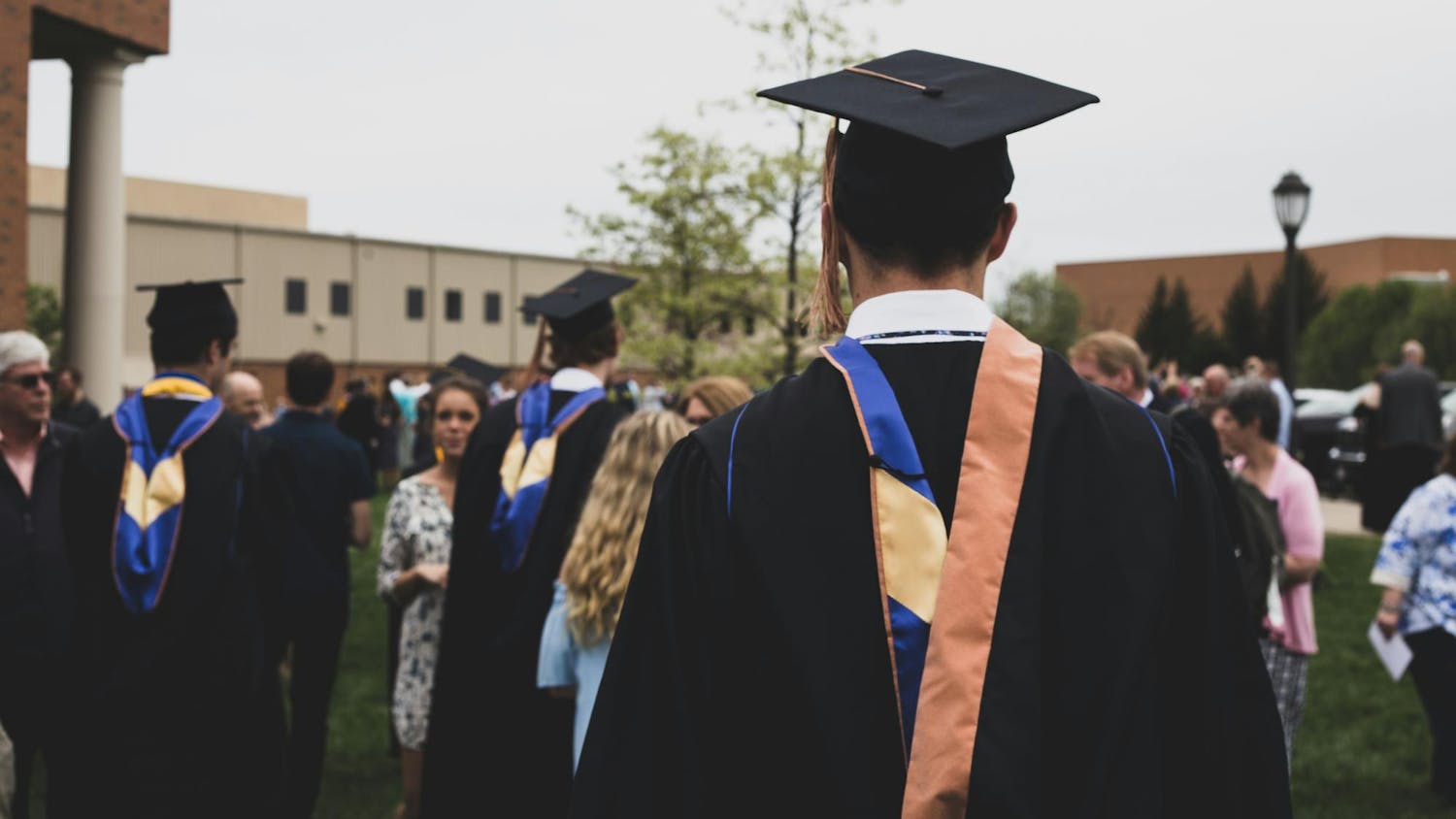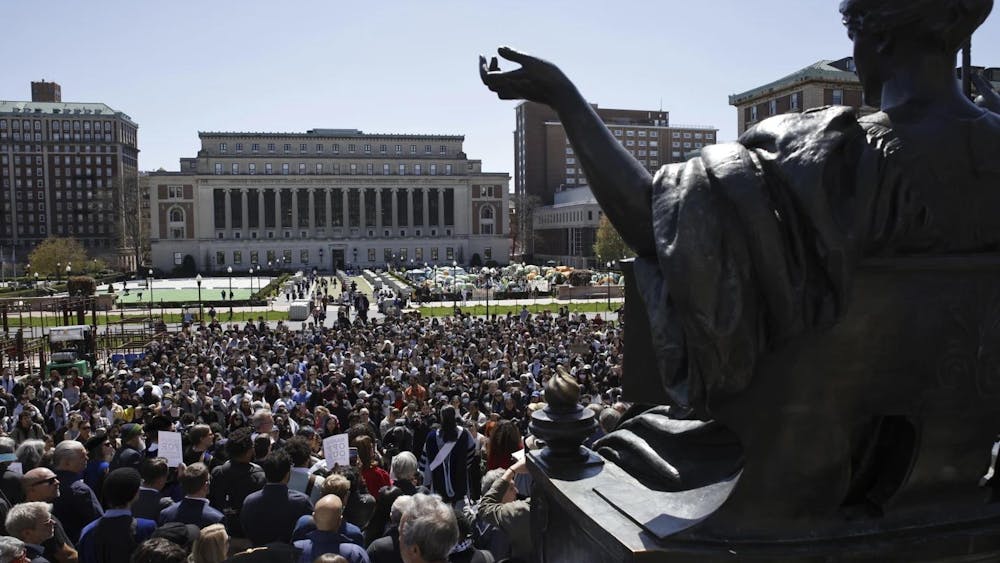The Gender Relations Center presented a panel discussion about “Violence in Media” in LaFortune Student Center on Thursday night.
The panel explored the portrayal of violence in scenes from both television and film, and included Mary Kearney, an associate professor in the Department of Film, Television and Theatre, as well as director of the gender studies program. Kearney’s primary areas of study are girls’ media culture and gender and identity. The other panelist, Stanford Hall rector Justin McDevitt, has researched gender-based violence in tribal societies and modernizing societies in Tanzania and Kenya.
The discussion began with a montage of scenes of violence from television shows and movies such as “Gone Girl,” “Safe Haven,” “Precious,” “Oliver,” “Grey’s Anatomy,” “Game of Thrones” and “Gossip Girl.” These clips depicted dating violence as well as familial violence, many portraying both physical and verbal abuse. Kearney said the clip from “Safe Haven” specifically stood out, not just because of the severity of the violent struggle which occurred between the couple in the scene, but also because the girlfriend at first aims to appease the angered boyfriend.
“One of the things that I find disturbing in that is the kind of gratuity of the violence up to that point,” Kearney said. “So there’s a way in which we can walk away and say, ‘Oh, but she fought back,’ and yet we as viewers were just subjected to her being brutally abused.”
McDevitt also noted how the culture in violence in media has evolved over time, saying how what was once acceptable decades ago would not be appropriate today.
“Our idea of what’s appropriate and what’s not has changed over time,” McDevitt said. “‘The Honeymooners’ was a black-and-white sitcom in the ’50s, and any time this character’s wife does something wrong he always says, ‘Alice, I’m gonna send you to the moon.’ And it’s funny then, but today — oh my gosh. At some point, someone ran that and thought, ‘There’s no problem with this.’”
The panel also discussed how the way in which films are produced affects the viewers’ perception of violence. Specifically, the camera angles and closeness in some clips amplify the intensity of the violence on screen.
“We have a handheld camera,” Kearney said. “Think about how weird it would be in this situation, to be the person behind the camera that is actually like the third member of the fight that’s going on. That puts us right in the moment as opposed to a camera shooting the scene from a distance.”
Kearney revisited the clip from “Safe Haven,” noting that while it was one of the shorter videos, the violent struggle felt long and heavy for the viewer. McDevitt, on the other hand, said he was most impacted by the scene in “Oliver” because Oliver — a child — is forced to be the helpless bystander as Bill Sykes murders Nancy.
Kearney said one of the reasons she enjoys teaching media is because it acts as a daily textbook and shows changes in how society displays cultures.
“One question that’s kind of hanging over all of this is how, then, should we be depicting violence?” Kearney said. “I have no good answers for this. What would be an accurate, authentic, respectful and non-traumatizing way to show violence?”













